
Your Color Story Starts Here
It’s no surprise that color has been a favorite tool for interior designers since… the beginning of interior design. And for good reason: the right mix leaves a lasting and memorable impact on anyone who sees it. But you don’t have to be a professional to master the mix and get the look you want. Whether your tastes skew more reserved or you’re always up to experiment, understanding how and where to use color will change your approach to home decor.
Know the Basics
The color wheel is broken up into warm and cool hues. Colors across from each other are complementary, and colors next to each other are analogous. One of the most dynamic combinations is called Triad: three colors that are evenly spaced throughout the color wheel. Complementary, Analogous, and Triadic colors are considered to be harmonious, and thus work well together.

See the Difference
Understanding the above makes it clear that not all combinations are created equal. Josef Albers, an influential artist and scholar best known for his work on abstract color, wrote “In visual perception a color is almost never seen as it really is – as it physically is. This fact makes color the most relative medium in art.” You may love a color on its own or with its compliment, but you may find it looks completely different in another environment. Learning some basic color rules (and how to make your own) gives you the know-how to curate your space like a pro.
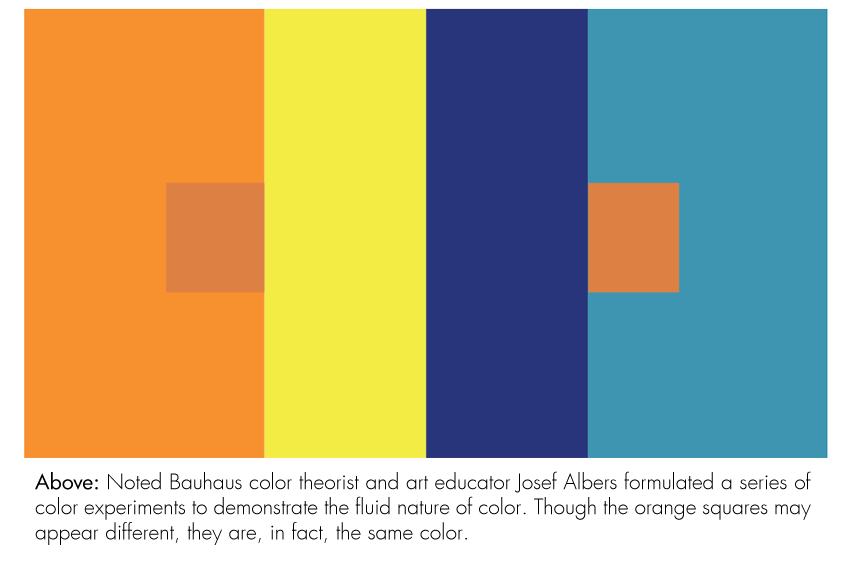
GETTING STARTED
Find Your Favorite
If you love a color, let it be the theme for a room. Start with a favorite color or the color of a favorite piece, then build around it using analogous pairings; this allows for a range of shades and tints without getting too chaotic. The dining room below is focused on all things green: a cool, well-balanced color that’s both soothing and rejuvenating. Small neutral accents–like fresh flowers and decorative figurines–add texture and interest without overwhelming the scene.

Let Color Families Work Together
When it comes to mixing hues, thinking in color families helps to keep it calm and cohesive. This is especially important in the bedroom, our most-personal space where we go to unwind and recharge. Here we see a deep blue overdyed rug balanced by a sprightly pop of orange (its complement on the color wheel), with cool green and neutral accents rounding out the room. While at first glance the color schemes may have seemed busy, the breakdown unveils a tight, well-thought-out color palette.
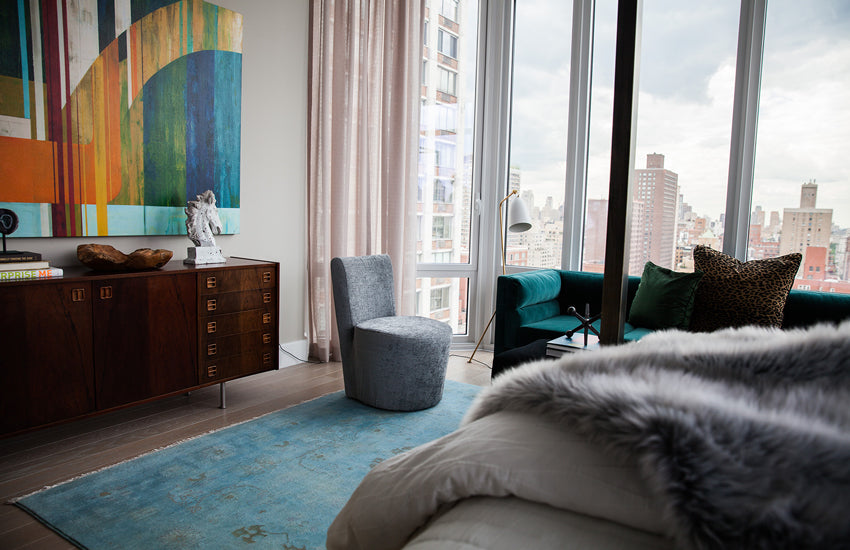
Use White to Keep It Fresh
Love color but want to switch things up? Use them all: go white. While white is often thought of as the absence of color, color theory describes it as a blending of all the colors in the spectrum, contained in white light. There’s no better place for bright whites than in the bathroom. Build the scene with light tiles, crisp white linens, natural accents, and soothing art. If you don’t want to go full monochrome, one poppy accent or statement-making rug will add the vibrancy you need.
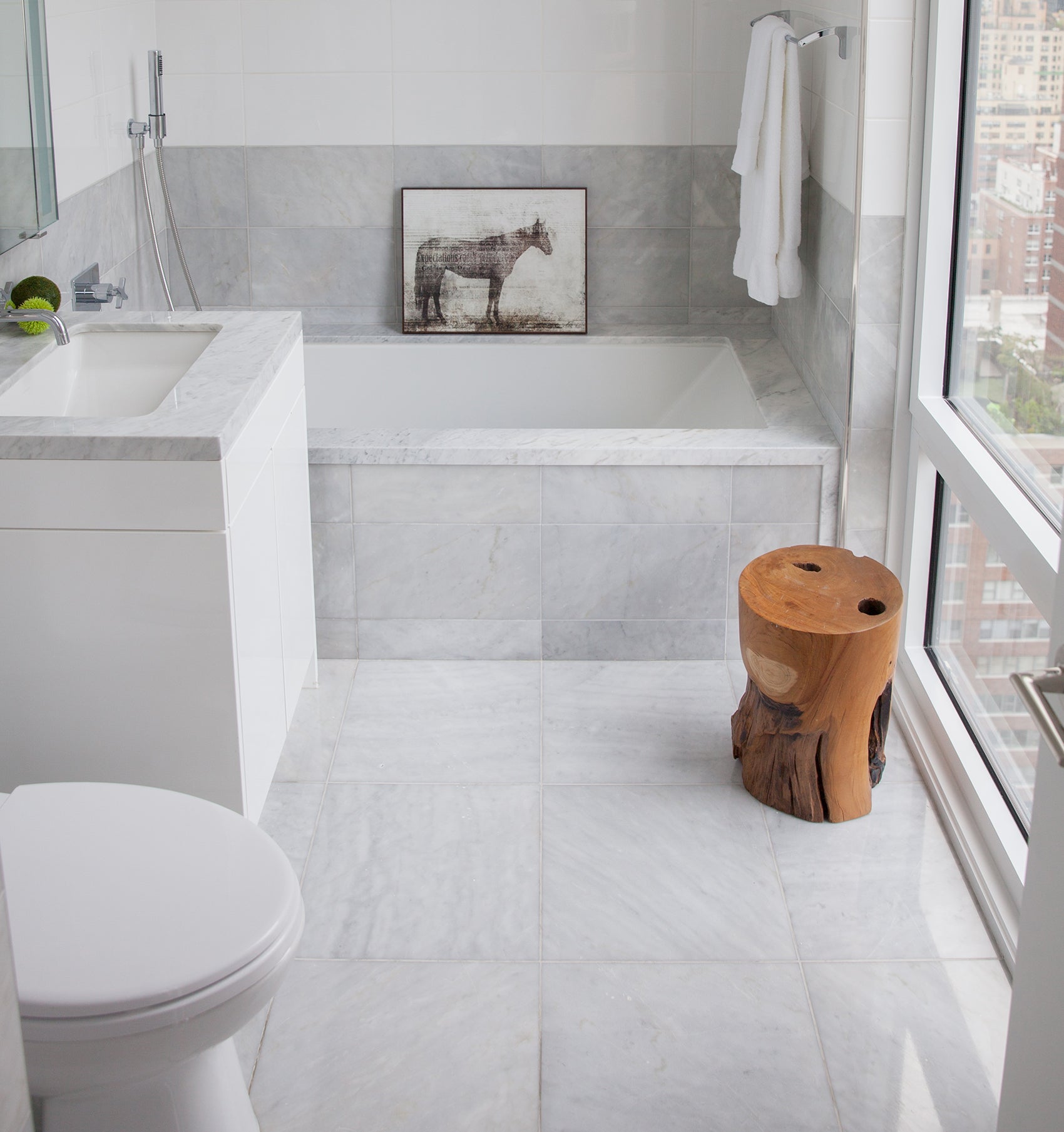
Keep the Kids’ Room Sophisticated (And Fun)
The soft pinks and blues we’ve come to expect of kids’ rooms are sweet, but often feel uninspired and even a bit juvenile. To create a fun atmosphere both you and your little ones will be inspired by, try switching it up with lively, unexpected colors. If there’s a hue you love but felt was too bold for a main area like the dining room or den, the kids’ room is the perfect place to introduce it. Round it out with interesting art and experiment with plenty of patterns—the more exciting and energetic the space, the more of a creative escape for your little ones.
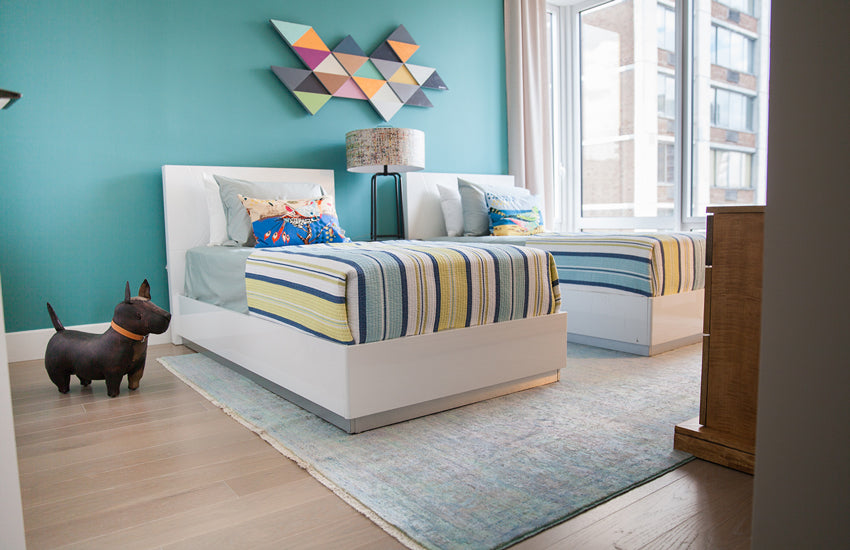

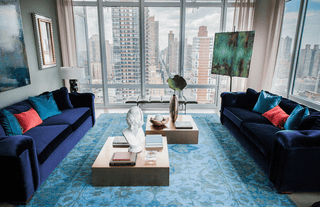
Mary Ann
I have a large den which is now painted brick and mustard. The floor is white tile with a brown and beige rug. I am having the whole interior painted off white but would like a color in the den. The size of the room is 25×18. Sectional is white with 2 side chairs (large) burgundy, beige and cream. I’m lost. Need Help. May be getting new furniture but what color?
Shanha Goodwyn
Lovely rugs…wish you would also share the furniture suppliers, as well. :)
Vinita
I want help with color